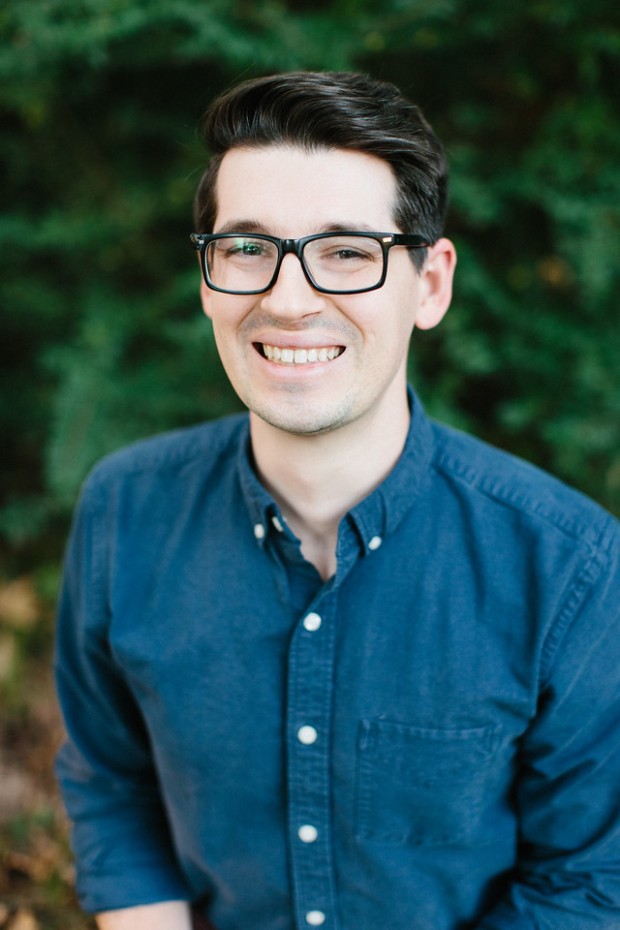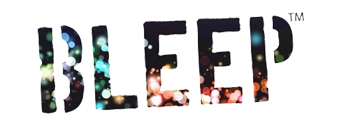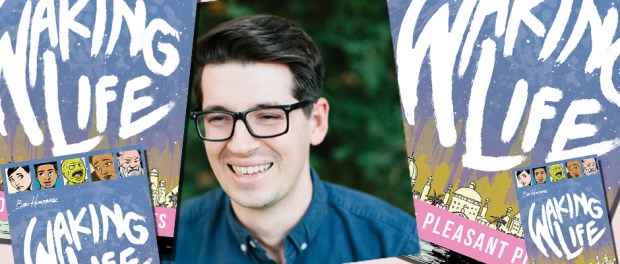BLEEP Artist Feature: A Conversation with Cartoonist & Educator Ben Humeniuk
Ben Humeniuk began drawing in a Lisa Frank journal when he was in first grade. “I inherited it from someone and filled it with drawings of Ninja Turtles.” From there, he never looked back. After cartooning in his high school’s newspaper, he then spent two and a half years doing the same at the newspaper at Baylor University. “Being seen by an audience every day, that’s really heady stuff,” he said.
Since then, Ben contributed comics to almost every digital issue of BLEEP we produced—even including a full graphic novel in an issue—and he’s now a published author. I caught up with him to talk about that ever-enduring balancing act of work, family, and art.

A lot’s happened since our days working in student publications at Baylor. You’re a husband, a father, a teacher and an artist. Many people in various creative fields are in the middle of a similar work/life/art juggling act. How do you find a balance?
A couple things make that successful. First is accountability for that balance. In my circumstance, that comes from my spouse. My wife Christin is really supportive of my art and of finding reasonable space for doing that. Boundaries are important and you have to find a rhythm and discipline where your art can flourish. For me, when my students go home at the end of the school day, I transition to writing and drawing. I also take an hour or two to do some work on my own when my wife and kids are in kid’s church on Sunday mornings. You know, I don’t get to read as many books as I’d like and my friendships have to be more scheduled and less spontaneous. I haven’t lost the quality of my friendships, just the flexibility. But that’s part of the balance.
Specifically when it comes to your family, how to you balance between time spent with them and time spent on creating?
Trial and error. I drew a graphic novel for a local at-risk prison ministry in 2011 and I drew at all hours when I was home. Throughout that process, I learned that if the work is intruding on the time when my wife and I are together, it was a problem. I learned it’s better for me to do it off-site and that way, when I come home, I’m fully present. It’s been a better option for me. When your partner knows you’re fully present with them, you’ll have much more success in the long haul.
What keeps you going when the plate feels endlessly full?
I would say it’s my faith and my relationship with God. I can get a lot of identity out of the art I create and can become twitchy when I’m not producing what I think I should. But I have to remember I was created for a purpose and I have to be connected to that purpose in order to make good art.
You’re working on a project at the moment with another BLEEP contributor, Caleb Bollenbacher. What can you tell me about it?
We have known each other for a while because of BLEEP and I couldn’t believe I’d missed him when we traveled in the same circles at Baylor. The theme of the book is gun violence and its effects. I thought it would be cool to partner with him so we could collaborate for one, but to also give us a chance to buffer our professional credits at the same time. Caleb had ideas immediately and a script ready quickly so I was able to start working on a rough draft of the story and drawing the pencils for it. We added Stephen Hesselman who is an inker, to finish the pencils. Caleb’s got this very moody thematic stuff going on and Stephen has been able to incorporate it into the story. I’m loving that.
As a writer or a cartoonist, what’s your process of jumpstarting your own creative process when you need to start a new project?
I keep a notebook in my pocket and a running set of Google Docs so when an idea comes unbidden out of the ether, I can write it down. Basically, I’m a squirrel catching these nuts of ideas and saving them away for later. That way, when I sit down, I have a list of ideas that are interesting for me to dive into.
Also, if I want to get in the zone, sometimes I go into fan fiction mode. I imagine a literary universe I already know and start to envision stories within that universe. That gives me inspiration to then develop stories of my own that are separate and distinct.

Order your copy of Waking Life today!
You are in the middle of a four-part graphic novel series called Waking Life. The first volume set up what seems to be a really big story. Where did the idea come from?
I’ve been a fan of Winsor McCay, an early cartoonist for the New York Herald, and his comic strip, Little Nemo in Slumberland, was a beautiful strip about the places kids would go in their dreams. In 2014, a tribute book called Little Nemo: Dream Another Dream came out and a couple of those strips started to play with the character’s internal life. That, to me, seemed like an interested hook. What is the inner life of a character who lives in a dream world? It’s the question of what happens to Peter Pan when Wendy grows up. What actions do you take? For me, looking at the internal life of the princess in my story, I asked the question, “What happens when the dream world isn’t enough and you feel like the real world is more satisfying?”
But Volume One was only the beginning. You’ve got so much more coming.
Yes. Volume Two is written and drafted. It should be ready in the spring. I’m also working on a four volume series for Rosen publishing. They’re an educational publisher and I’m doing a STEM-related graphic novel series that will be available next August. I went to ALA and they happened to be there and we started a conversation. They had a project in mind and I was able to get on board with them.
Talk to me about criticism. When we put our work out into the world, we are opening it and ourselves up for critique. How do you handle when someone is less-than-kind about your art?
I try to put it in context first. I try to understand how that person is reading it. What’s their intention on communicating that criticism? Is it meant to be derogatory? Are they coming from an uninformed place? I do try to take to heart what they’re saying is deficient about the work and I see if there are any positive aspects that I can build on. In comics a lot of time, people are forced to take first drafts to print because of the time it takes to make them. That’s making me more intentional about doing drafts to get the story right rather than to get the story out. When I look at the graphic novels that are coming out of the big publishing houses, a lot of times, the authors and artists will work in rough draft form for a long time so they can make changes often. Then they’ll start the final draft. But that’s a luxury in book trade publishing that monthly comic trade publishing still doesn’t enjoy.
What makes you happiest in the world?
Having the opportunity to reflect on something and then put it into action with people. Being able to read something interesting and then come back and discuss it with my wife. Finding a new strategy for writing and being able to share it with my students. Learning a new spiritual truth that I can share with my community. That’s when I feel most alive.
Why do you persist in creating?
In the movie Chariots of Fire, when Eric Liddell is training to run in the Olympics, his sister who’d been a missionary comes to him and challenges him with why he’s not doing the Lord’s work. Eric’s response was, “I believe that God made me for a purpose. But He also made me fast, and when I run, I feel His pleasure.” I believe I’ve been made in a way that I enjoy creating and that’s a reflection of my Creator. I want to honor His design and live out that design. I want to connect with other people and reach them where they are; to exchange a handshake and some simple truths about what life is and be richer for the interaction.


You must be logged in to post a comment.